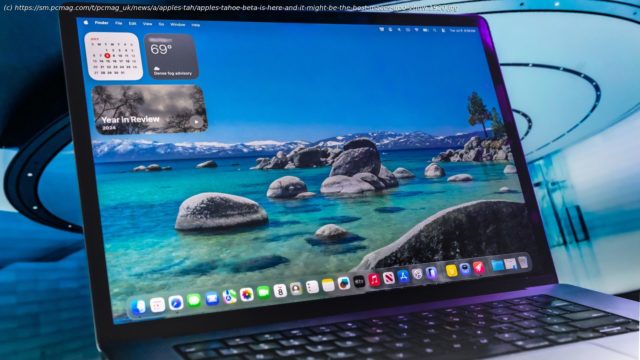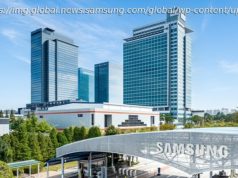The macOS 26 public beta is packed with intelligent features, a bold new design, and deeper iOS synergy than ever before. I can’t wait to make the final release release my new daily driver.
Now available as a public beta, macOS Tahoe (version 26) is set to be the most spectacular and useful upgrade to Apple’s desktop operating system in the last decade. It not only looks better than ever, thanks to the Liquid Glass design overhaul, but it also introduces convenient calling and messaging enhancements, super-efficient keyboard shortcuts, and unprecedented Spotlight features that make it a productivity marvel. I’m almost impatient enough to use the public beta of Tahoe as my daily driver thanks to its genuinely impressive feature set and stability, though I’m still planning to wait for the full release in the fall. I’ll be able to share my full thoughts then, but in the meantime, these are my initial impressions.Can Your Mac Run Tahoe?
Tahoe runs on any Apple silicon-based desktop or laptop; it supports the M1 and M4 chips and everything in between. Alternatively, you can install it on the 13-inch MacBook Pro (2020), 16-inch MacBook Pro (2019), 27-inch iMac (2020), or Mac Pro (2019). If you have anything older, you’re out of luck.
Tahoe will be the last macOS version to support Intel-based Macs. Apple has also warned developers that it will severely reduce the functionality of the Rosetta 2 emulation layer—the software that lets Intel-based macOS apps run under Apple silicon—for the version that comes after Tahoe. In other words, Apple is decisively moving away from supporting non-silicon Macs.What’s New in macOS Tahoe?
Here are the biggest changes in macOS 26 in order of importance:
Apple’s Liquid Glass software design ushers in a spectacularly more attractive (but potentially distracting) interface.
The iOS Phone app arrives with the Hold Assist feature that lets you focus on something else while the app silently waits for a live agent to pick up.
Spotlight gains hundreds of helpful ways to search for data and perform complex actions.
The automated Shortcut feature gets new conveniences formerly available only to advanced users who were comfortable with the AppleScript scripting language.
Calls and Messages support live translation, meaning they will automatically translate what you say or type into the recipient’s language. Then, they will translate the recipient’s reply into your language.
Keep in mind that many of these features rely on Apple silicon.Interface and Design: Liquid Glass Takes Over
The most spectacular change in Tahoe is the semi-translucent interface that Apple calls Liquid Glass. It takes many of its cues from the visionOS operating system used by Apple’s Vision Pro headset.
I have conflicting feelings about the new visual direction. Messages and menus are brighter and livelier than ever, but the large rounded corners and wide margins between the borders and content of an app seem somewhat distracting. It seems at least possible that Apple designed Liquid Glass partly for the sake of gee-whiz marketing instead of for improving ease of use and efficiency.
Liquid Glass comes with other interface changes, too. Widgets optionally move from the communications center to the desktop. The macOS menu bar is transparent by default, leaving its icons floating over the desktop. Otherwise, app icons get rounded corners, while sidebars in app windows gain a tint to match the color of the desktop. You can fortunately adjust most of these behaviors in the Settings app, but you can’t—and won’t want to—change the new spacious layout of apps like Messages and Contacts, where horizontal lines separate items that used to crowd each other.
Other design tweaks aim to improve productivity. For the first time, macOS includes an option to link a folder’s color to its color-coded Tag (the colorful dot that appears to its left). And you can now stamp folders with an emoji or icon of your choice (including default ones like Applications and Downloads) to make them easier to find.
I’ve been begging Apple for years to let me change the blinding blue default color of macOS folders. Now, I can apply any color I like, with an option to make folders lighter or darker depending on the time of day—when Apple resolves to change a feature, it doesn’t go halfway. This set of folder customization options outclasses what’s available for any other desktop OS, either natively or via third-party software.
One of my long-standing annoyances with macOS was the lack of control over the menu bar. Often, an icon that an app automatically added to it would disappear behind my MacBook’s webcam notch or another app’s menu. Tahoe thankfully gives you the power to choose which icons appear here. I might still turn to the third-party Bartender app for its ability to add a secondary, drop-down menu, but Tahoe’s native options are a major improvement.Calling and Notifications: More Parity With iOS
macOS already includes the iPhone Mirroring capability, which displays your phone screen in a window on your desktop, meaning you can run most of your iPhone apps without leaving your Mac.






